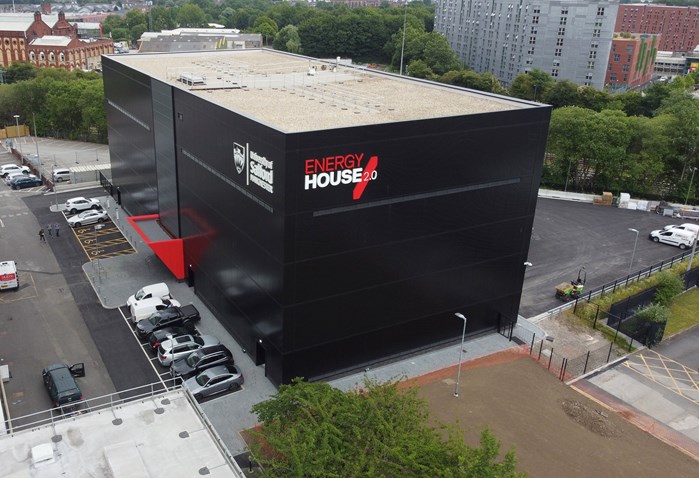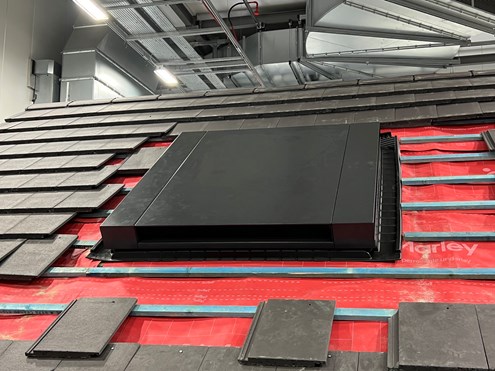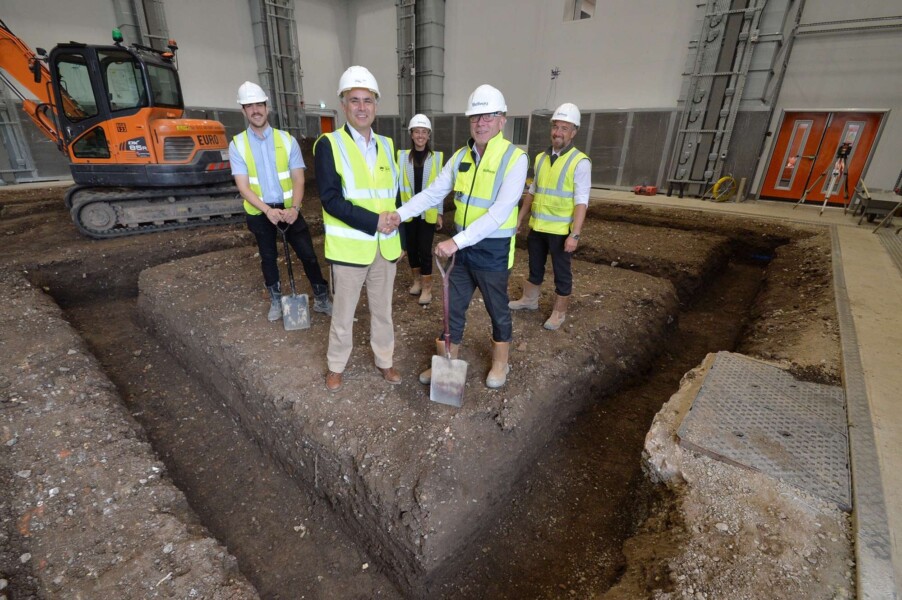A new attic heat pump is being developed to sit in your loft space
The new heat pump might become a reality with Bellway Homes testing its prototype in the attic of an experimental eco house, built from scratch inside a university building

An innovative new air source heat pump that sits in a property’s attic has been developed by UK property developer Bellway Homes.
Heat pumps have grown in popularity as Britain looks to lower its carbon footprint by replacing fossil fuels for home heating and hot water. And the government is so convinced of their effectiveness as a green heat source that it launched a grant for homeowners to buy and install them, in a bid to encourage the nation to convert.
Heat pumps recycle heat as well as moving it from one place to another. They use a compressor and a circulating structure of liquid or gas refrigerant to extract heat from outside sources and pump it indoors.
There are two different types – air source heat pumps absorb heat from the outside air, while ground source heat pumps use pipes buried in the garden to extract heat from the ground.
The technology has been put forward as an alternative to traditional gas boilers and electric heating, but concerns have been raised about the cost and how suitable they are for some homes. However, there are hundreds of people working to improve this, and find ways of reducing their electrical draw. And putting a heat pump in an attic is one of these innovations — interesting because doing so is potentially a good way to keep the temperature around the heat pump warm to reduce its need to generate new heat, which is what can drive up costs. It's also interesting that such a large property developer has come up with the idea, potentially rolling them out in their new builds across the country.
The new attic heat pump is currently being tested in Bellway Homes’ research house: The Future Home at The University of Salford. Here's what we know so far about the trial house and heat pump prototype below.
Where in the attic will the heat pump sit?
Bellway Homes has engineered the trial house, which is built from scratch inside the black box university building pictured above, to support a 200kg air source heat pump within the roof space. Rather than sitting in the middle of the attic, the heat pump will need to sit beside one of the external walls — albeit this wall is probably a roof elevation in an attic — to enable an outlet to be fitted to the exterior roof. This outlet on the roof can be seen in the image below.
Get the Homebuilding & Renovating Newsletter
Bring your dream home to life with expert advice, how to guides and design inspiration. Sign up for our newsletter and get two free tickets to a Homebuilding & Renovating Show near you.
The company will be testing what the heat pump in the attic is like to live with (presumably noise levels, heat output and costs will be the focus), with real occupants living inside. A second heat pump will be fitted to an external wall of the test house as well to compare how each performs.
Jamie Bursnell, group technical and innovations manager for Bellway, said: “Installing an air source heat pump within a loft space is a bold move – one that no UK developer or retrofit project has previously attempted.
“During the research period, we will have people living within the home to test the performance of the heat pump during real-life use. If the unit in the loft performs well, it could create a new way for homeowners to reduce their carbon footprint without compromising on space or aesthetics.
“It is well documented that air source heat pumps could increase running costs but so far there is little reliable data on their performance. We are looking to find the optimum settings to maximise effectiveness and minimise costs for our customers.
“We will be able to compare the data from the two heat pumps to determine the most viable option for the future.”

How will an attic heat pump work?
The great thing about this attic heat pump is that frosty or cold days will no longer be as much of an issue as the heat pump is an internal rather than external feature. Heat pumps, which have so far been external, use more electricity in winter for their defrost cycles, this can interrupt heat supply while still using energy, making them expensive. So far, innovations around the future of heat pumps often centre around reducing this inefficiency rather than looking at reposition the heat pump itself. For instance, a heat pump prototype being developed in Scotland is looking at adding a heat storage to run its defrost cycle rather than relying solely on electricity.
In terms of how the air source attic heat pump works, this is in a similar way to existing external heat pumps, absorbing heat from the colder area outside the property and releasing it inside using an heat exchanger with a fan – similar to those used in air conditioners.
Worcester Bosch has manufactured the attic heat pump for Bellway Homes using a Bosch 3400i Hydrotop Solution unit. Bellway Homes had to specifically design the trial house's timber frame to accommodate the unit.
Darran Burrage, UK new build director at Worcester Bosch, said: “One barrier for existing properties to convert to a heat pump is size and location.
“By placing an air source heat pump in the loft of The Future Home, the trial will hopefully pave the way for an alternative location and if successful enable more homeowners to see the technology as a viable greener heating alternative in the future.”

When are heat pumps in attics being rolled out?
The new heat pump is being tested in the Future Home is being built by Bellway inside a climate-controlled chamber at Salford University as part of its £16million Energy House 2.0 research project. As for when the attic heat pumps might be rolled out across the UK, it is currently dependent on the success of the trials and whether the attic heat pump in its current form is at all viable. This will focus on it's low-carbon potential, the costs of running it and whether it's comfortable and safe to live alongside.
The Future Home will also test underfloor and infrared heating, as well as a host of low-carbon innovations. These include mechanical ventilation, double versus triple glazing, battery storage for solar energy and a shower which transfers heat from wastewater to warm the incoming mains supply mains, reducing the energy demand from the shower.
Professor Will Swan, director of Energy House Labs at the University of Salford, said: “The growing challenges of climate change and the cost of living crisis mean we need to consider how we build and operate our homes. Energy House Labs’ mission is to work with industry and policymakers to provide evidence for what works in meeting these challenges.
“Energy-efficient, high-performing homes can change people’s lives. The importance of this agenda is one of the main reasons behind the University of Salford’s major investment in Energy House 2.0, which is a critical piece of research infrastructure that can help us find solutions to these problems.”
Sam is based in Coventry and has been a news reporter for nearly 20 years. His work has featured in the Mirror, The Sun, MailOnline, the Independent, and news outlets throughout the world. As a copywriter, he has written for clients as diverse as Saint-Gobain, Michelin, Halfords Autocentre, Great British Heating, and Irwin Industrial Tools. During the pandemic, he converted a van into a mini-camper and is currently planning to convert his shed into an office and Star Wars shrine.

